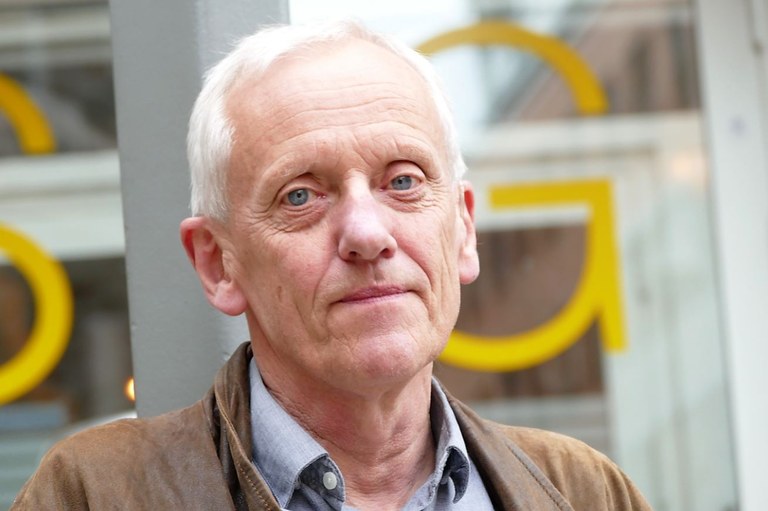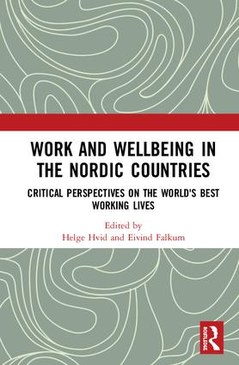Who killed the Nordic model?
If you read Helge Hvid’s and Eivind Falkum’s book about Work and Wellbeing in the Nordic Countries like a crime story, it becomes exciting. The two editors are trying to establish whether the Nordic model already has died, or is dying. But does the evidence hold?
It is a tough case to begin with. All international statistic show that the Nordic countries are prosperous, equal and happy. For several decades it has been claimed that “the Nordic model” is the explanation. Hvid and Falkum question that.
“Nothing lasts forever. One day, each and every one of us will agree: the Nordic model, or the Nordic approach as we prefer to call it, is not with us anymore,” write the two researchers.
They work, respectively, at Roskilde University in Denmark and the Work Research Institute at OsloMet University in Norway.
Together with 25 other researchers, they look at different aspects of what has been called the Nordic Worklife model (NWM). Does it still work? Is there really a Nordic Worklife model, or just separate national models with big differences? Are there even national models or are there different models for each sector of society?

Eivind Falkum
“We need to question the idea of a common working life model in Norway, and therefore also in the rest of the Nordics,” write Eivind Falkum, Ida Drange, Heidi Enehaug and Bitten Nordrik in the chapter called “Workplace democracy under pressure”.
Exhibit A
In this chapter there is also what could be called Exhibit A in the case of the demise of the Nordic model. In 2016, the Work Research Institute and five unions launched an annual survey on co-determination. It was repeated in 2017, and some of the questions were also identical to a survey done by Fafo in 2009.
45% of the more than 3 000 respondents answered that “worklife is becoming more authoritarian”.
“At the same time, 10% answered that worklife had become more democratic,” admits Eivind Falkum, when we meet him.
21% of the respondents said “don’t know” and 24% said “no change”.
“There are of course differences among different sectors. Worklife was less democratic in companies where the owners of the companies were foreign. More surprisingly, those who worked in state-owned Norwegian companies and public servants also answered that worklife is becoming more authoritarian.”
The real decisions were made elsewhere
When Falkum and other researchers studied a large multinational company, they found that even though it established all the necessary bodies, it was just a front – the real decisions were made elsewhere. They concluded:
“They ignored collective and representative democratic structures and intentions in practice, while simultaneously stating that they were following the national rules of the game. Lawyers have evaluated the process and concluded in favour of the unions.”
One of the main aspects of the Nordic Worklife model is the tripartite cooperation between the unions, the employers and the government.
“It’s reduced but for different reasons. In Norway it’s the government who wants out, in Denmark the unions and in Sweden it is the employers who have drawn back from the tripartite cooperation,” says Eivind Falkum.
Throughout the book, Sweden keeps popping up. To write about the Nordic model without taking account of what happens in Sweden is hard. Adding a third country doesn’t make the model more uniform.
Here are two of the differences the researchers write about:
- All three countries see it as a priority to have as many young people as possible entering the labour market, with the right education. Vocational education and training is one way to help those who have difficulties. But the models differ a lot between the three countries, with Denmark having the closest ties with workplaces for training, while Sweden has the weakest links.
- The countries differ when it comes to job security. In Denmark, the protection as stipulated in laws and collective agreements is very weak, especially for blue-collar workers, compared to Norway and Sweden.
Showing the differences between the national models is just one way of arguing that it would be more correct to talk of a Nordic approach, than a Nordic model. You could also put the question like this: is prosperity in the Nordics a result of the model, or has prosperity emerged because the countries have been more influenced by neo-liberalism than what is commonly thought?
According to the researchers the Nordic countries:
- Accept the globalisation of the economy.
- Are in favour of flexibility and decentralisation of collective agreements.
- Demand that citizens who cannot support themselves should not just be provided for through social benefits. They should be pulled and pushed towards work.
“We can hardly conclude that the Nordic model has been a protective buffer against neo-liberalism. On the contrary, the model has widely embraced neo-liberalism. And adapted it to ensure its own survival: the social parties do not oppose market forces, they accept and adapt to them,” says Eivind Falkum.
New forms of managment
New Public Management (NPM) and Lean are two forms of management that are closely studied, which could be threats to workplace democracy. Looking at how NPM has been introduced in elderly care in Denmark, Agnete Meldgaard and Anette Kamp, the consequence is undoubtedly that elderly care has been reorganised according to rationales of increased marketisation, economic efficiency and standardisation.
But the two researchers also show that resistance to NPM sometimes has been successful.
“Taking elderly care as a case, we would argue that that Nordic NPM may provide possibilities to retain autonomy and professionalism, but we also show that it may not be without costs in terms of struggles, emotional strain and self-intensification.”
Writing about Lean management, Peter Hagedorn-Rasmussen and Pål Klethagen refer to research that concludes “that there is no straightforward way to judge the influence of Lean on work environment: it is possible to have a positive work environment with Lean and even improve ---.”
Still alive?
Looking from the opposite side there are also many signs that the Nordic model is alive and kicking:
- In Denmark, about 75% of private sector employees are covered by collective agreements, and in the public sector 100% are covered. Similar figures for Norway are 57% in the private sector and 100% in the public sector.
- The 1.5 million members of collective labour unions in Denmark are represented by shop stewards in the workplaces. All in all there are 50 000 union representatives.
- When it comes to the psychosocial and organisational working environment, as many as 94% of Norwegian workers, 91% of Danish workers and 86% of EU workers are satisfied with their working conditions.
“I hope that the book will give a more nuanced view of the Nordic model. There has been too little dissidence. We want to treat it with some scepticism, says Eivind Falkum.
- Five unions in an annual survey
-
The Norwegian Police Union is the trade union which organizes employees from all levels within the police force. It is also one of five unions taking part in the Norwegian Research Institute's annual survey on co-determination.

 Follow us on Facebook
Follow us on Facebook
